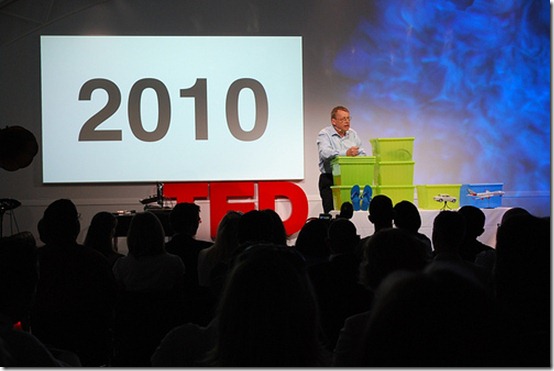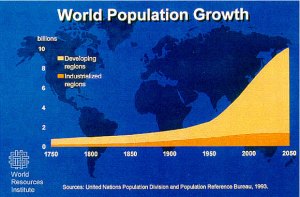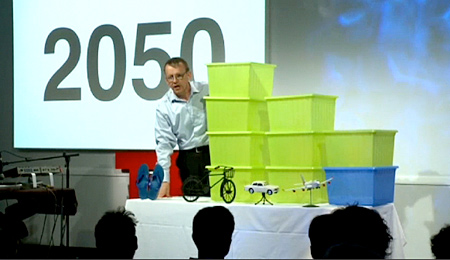Hans Rosling gives an illuminating TedTalks presentation on one of my greatest ecological concerns: over-population.
[youtube]http://www.youtube.com/watch?v=fTznEIZRkLg[/youtube]
Let each box = 1 billion people.
In 1960 it was relatively accurate to divide the world into the “First World” and “Third World”, the “rich” and the “poor”, the “developed world” and “developing world” or the Centre and Periphery.

In 1960 we were 3 billion people. The blue was the 1 billion at the top of the pyramid, dreaming of buying a car and a dishwasher. The green were the 2 billion at the bottom of the pyramid, saving for a pair of shoes and trying to feed their families.
In 50 years much has changed. 3 billion has turned into 7 billion. 4 more boxes have been added to the table.

Brazil, Russia, India, China, (the BRIC nations), are rising up. While the 1 billion blue affluent people now take planes to remote destinations for holidays, another green box of 1 billion people are buying cars, and 3 green boxes equating to 3 billion people are buying bicycles. We still have the 2 billion at the bottom looking for food, and saving for a pair of Havaianas. So an extra 4 billion in the middle mean a wider “gap” but that is filled in with a massive middle-class majority. Maybe we’d think of them as “Second World” or “semi-periphery” nations, or nations within nations seeing as the spread of income within nations also varies greatly.
So comes our familiar (and what I consider to be quite a horrifying) graph:

Now unless we want the whole world to look like the suburbs of Mumbai (no offense to my Indian friends who live there, but it really is a horribly over-populated loud dirty chaotic city), we can’t grow at this exponential rate forever…
Rosling gives a realistic picture:
 Only 2 more boxes, 2 billion more people, bringing us up to a grand total of 9 billion. And I guess ideally, eventually, all those boxes are stacked on top of one another at the far right, enjoying their holidays all around the world.
Only 2 more boxes, 2 billion more people, bringing us up to a grand total of 9 billion. And I guess ideally, eventually, all those boxes are stacked on top of one another at the far right, enjoying their holidays all around the world.
Ho hum, and how is this, pray tell, going to come about?
Many, including Rosling, predict that the formula for a stabilizing population is to decrease poverty. A little family education for women and contraception availability (along with motivating men to wear it and Catholics to allow it) also helps. Apparently this is what the statistics say, loud and clear, so let’s go with it.
With poverty as it stands in 2010, with 2 billion at the bottom, by 2050 this 2 billion will be 4 – hence the 4 boxes on top of one another.
In order to stabilize population at 9 billion, these 4 billion people NEED to be out of absolute poverty – they need to be able to afford food and shoes, and be dreaming of bicycles and cars. If not by 2070 they’ll turn into 8 billion, bringing us up to 17 billion.
Following this line of thinking I see two questions that are imperative for anyone who doesn’t want to share the planet with another 16,999,999,999 people. These are:
- How are we going to ensure those 4 billion are in shoes and getting on bicycles by 2050?
- What can be done so that the 5 billion humans driving cars and flying planes don’t pollute the planet & exploit the non-renewables so much that all 9 billion don’t end up back at square one, scavenging off the left-overs from today’s greed?
Hm, tough questions, did I hear someone mention mining the moon and moving to Mars?
No Comments Yet